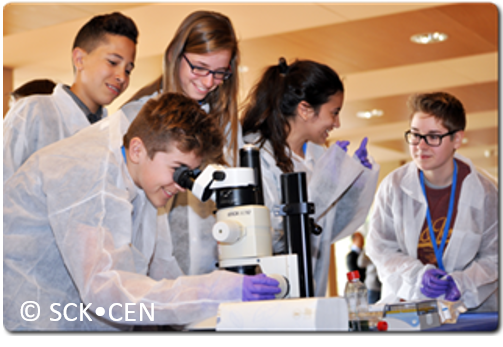Microscale understanding of the dynamics of frying induced fluid transport in porous foods

Category
Ph D Defense
Date
Venue
KU Leuven, Aula Wolfspoort, 00.08 - Schapenstraat 34
3000 Leuven, België
3000 Leuven, België
Promovendus/a: Ujjwal Verma
Promotor(en): Prof. dr. ir. Bart Nicolai, Prof. dr. ir. Jan Delcour, Dr. ir. Pieter Verboven
Who doesn’t love a crispy, golden French (or rather Belgian) fry or a delicious donut? Deep-frying is what gives these foods their irresistible texture and flavour. But there’s a catch: deep-fried foods tend to absorb a lot of oil, making them high in calories and, unfortunately, not the healthiest option. This has sparked growing interest in understanding how these foods can be enjoyed without the extra calories.This research investigates the science behind oil absorption during deep-frying in starch-based products, such as wheat flour doughs, with implications for achieving a healthier balance between taste and nutrition. At the core of this study is the question: What happens inside the food at the microscopic level during frying, and how does this affect the amount of oil absorbed?
To answer this, this dissertation examines how the internal structure of the food evolves during the frying process to understand its influence on oil uptake. By using advanced techniques to study factors such as food composition, internal food microstructure, and organization of water, this research aims to unlock new ways to make deep-fried foods that absorb less oil.
A key breakthrough is capturing the frying process in real time using high-speed X-ray scanning (μCT), complemented by insights from nuclear magnetic resonance (NMR) analysis. Together, these techniques reveal how the food's internal structure changes as it fries, how moisture is lost, and how physical and chemical changes during frying, with respect to state transitions and starch-water interactions, affect pores formation inside the food. These pores play a crucial role in determining the extent of oil absorption.
Interestingly, most oil absorption occurs after frying, when the food is removed from the oil and begins to cool. While we usually think of oil soaking into the food during frying, it turns out that steam leaving the food prevents oil from entering. Instead, oil is drawn into smaller pores during cooling through a process called capillary action. Food composition also plays a key role, the botanical origin of starch influences the resulting microstructure of the fried product, and in turn, the amount of oil absorbed.
These new insights open exciting possibilities for developing frying methods and food formulations that reduce oil absorption, making deep-fried foods not only tastier but healthier as well, because who says you can’t have it all?
All Dates
- 2025-10-06 16:00
Powered by iCagenda







